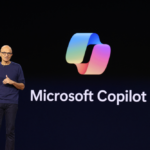MQLs have lost their edge. Marketing teams often have to choose between quality and quantity, compromising both. But what if they didn’t have to?
A healthy pipeline means a consistent flow of quality leads. But businesses have been facing an acute lack.
In 2024, 17% of SDRs reported a critical lack of high-quality leads. This was their tipping point.
The reality is that only a handful of MQLs actually convert into opportunities, posing a puzzling challenge for marketing and sales. Most marketers believe the solution to this is adding more qualifiers to an already long and complex journey.
But it only ends up deterring the prospects, resulting in high drop-off rates.
To actively prevent this, modern marketing has taken a distinct step forward. Marketers have observed that the disjuncture could be present within their own knowledge – do they entirely gauge who MQLs are and their significance?
Accurately identifying MQLs is paramount, but its only one portion of the process. Nurturing these leads and handing them off to sales is another story. This is where the drawbacks kick in.
The kernel of this problem is that every MQL is unique – they have distinct pain points and come from multiple channels. So, a generic approach isn’t the way to nurture them anymore.
Rather than opting for only a single perspective, marketers must rethink.
They must take a multidimensional approach— a broadened view to get a clear picture of what’s happening, and an incisive perspective empowering them to act on it.
The same logic applies to identifying and nurturing MQLs.
So, to understand where marketing and sales are facing an objection, we undertake a simple approach by first defining an MQL.
What is a Marketing Qualified Lead?
According to Gartner’s glossary, an MQL:
“A marketing-qualified lead (MQL) is a potential customer that has been reviewed by the marketing team and satisfies the criteria necessary to be passed along to the sales team.”
Gartner’s definition of an MQL might be correct, but it actually spotlights a complexity.
Honestly, there’s a critical lack of a single and consistent definition of MQL. Whether it’s organization-wide or cross-departmental, the meaning continues to vary.
Marketing and sales lack consensus on a singular definition of an MQL. Where does this confusion stem from?
In B2B, marketers hold a sweeping view of who MQLs are. They often misconstrue the underlying logic or have limited knowledge. This is why much of the content we come across states that MQLs are dead.
Whether it’s true is another concern, but the confusion begins with the definition.
Most marketers believe leads who download a whitepaper after filling out a form are MQLs. It’s a limited viewpoint. Half of these don’t even convert into opportunities.
In the case of modern marketing, MQLs have come to embody something else.
Because today, savvy marketers have to remain focused and spearhead. When buyer patterns are minutely evolving in the blink of an eye, the perspective has to shift, too.
Prospects who download your whitepapers and case studies but never revert – are they really interested? These so-called prospects might never even engage with your brand again. But if your marketing thinks of them as such, they hand off the account to sales.
And what exactly do these ‘MQLs’ turn out to be? False positives.
Think about this: a market researcher is browsing through your assets and downloading your whitepaper. They do so to gather research material, not because they might be prospective buyers. This lead may never contact or engage with your assets again.
So, is it right to consider mere window shoppers as MQLs?
For your SDRs, this means a total waste of time and resources. They wouldn’t engage and communicate with ill-fitting leads who don’t add any value to your pipeline.
The underlying logic behind these leads not being considered marketing-qualified leads is that they lack one crucial component- intent.
Multiple Signals and Propensity to Buy: Why Is Qualifying Leads Crucial?
Make no errors- intent isn’t synonymous with early interest. But most marketers get trapped in this confusion.
They fail to spotlight the propensity to buy, which doesn’t just mean downloading a whitepaper. Propensity could work as a measuring metric: how inclined is the lead to make a purchase? This is crucial to pick out leads that actually matter.
However, there’s another error that B2B marketers often make.
Each understands that B2B buying is complex, long, and intricate. 80% of the time, these decisions are made by committees of at least three people rather than by an individual. The more significant a deal, the larger the group involved.
Every buying group has individual decision-makers with different levels of intent and roles. But most lead qualifying criteria only consider the buyer as an individual, not a group. And this is why most marketers believe MQLs to be a waste of time for sales.
Modern marketers must understand that these buying decisions are made by individuals with distinct personas and interests. Their outdatedness is why sales face a severe lack of high-quality leads.
Most scoring models are based on the profile and behavior of a single individual. It’s true that even the engagement signals of one active profile can indicate interest. But it doesn’t necessarily point towards a true propensity to buy.
If, in B2B, scoring is based on a single individual, does it really carry any significance? Not much.
In the multi-formatted and multi-channel marketing landscape, purchase intent is a single resource in estimating what buyers want. But it’s not mere whitepaper downloads. Customer decision-making is highly complex, and most have made up their minds even before they talk to an SDR.
There’s so much bias and nuance involved in decision-making.
Every research and data gathered amid other explicit factors skew the buyer’s perception. Think about this: there’s bias present in data gathering as well. Most decision-makers are so self-aware that they are inclined towards data that supports existing narratives.
Thus, marketers’ goal should be to make them deliberate and question their biases. Even though they’re looking for easy solutions to their pain points, potential buyers always present with one question: how is your brand different from your competitors?
Instead of feeding into their notions, brand content should offer immersive customer experiences that study their behavior and fascinate them.
This is why multiple touchpoint analyses have become such a vital segue to gauge buying intent. Intent can only be fully gauged when marketing understands where the prospect is in their journey. Accordingly, campaigns can take two routes: either challenge or confirm their perception.
This approach filters the leads based on quality rather than quantity.
If the 50 MQL are receptive to your brand’s offerings as opposed to the 100 who don’t even know who you are- what’s the bottom line? The latter holds no value for sales.
On the flip side, with the 50 who are sales-ready, SDRs save time, and marketing knows which touchpoints to monitor better than others.
How Can We Approach Creating a Comprehensive Definition for MQLs?
At the heart of defining an MQL lies ‘active’ engagement signals. Downloading a whitepaper is underscored as engagement, but does it truly reflect purchasing intent?
Maybe, and maybe not.
It all depends on how proactive the lead is, not just early interest or initial intrigue. MQLs must maintain a balance of or remain at the crossroads of active marketing endeavors and a lead’s continuous engagement.
Marketing has one motto: no single rule that applies to all, and it’s experimental. So, who’s to say a single definition of an MQL will actually prove substantial? But given its vitality, marketing and sales must construct one that fits both perspectives.
First, talk to sales. Understand what MQLs are and aren’t from an SDR’s viewpoint. These particular components should flow fluidly between sales and marketing to create consistent momentum in the funnel.
A shared definition doesn’t mean marketing will qualify only those types of leads. But it’s better to get as close as possible to what SDRs think an SQL is and which leads are simple to contact and qualify.
Second, leverage buyer personas to begin. Brands want to curate strategies and content that resonates with their audience. But what if they don’t know who their buyers are? Buyer personas can help marketers as much as they do sales.
From demographic to behavioral data, the criteria to outline these personas can be used in an MQL’s definition. Even if it’s not a definition that’s set in stone, this will at least pinpoint the most basic requirements in labeling a lead as an MQL.
Third, fine-tune lead scoring. As exemplified before, there should be a bridge between the propensity to buy and sales readiness. Moreover, qualifying crucially depends on engagement signals, whether it’s an individual or a buying committee.
Which intent signals actually qualify, i.e., help explicate MQLs? This is why behavioral data, firmographics, and demographics – every bit of data point (from each channel) holds significance initially. It must account for individuals within a buying group, too.
And finally, it’s up to marketing and sales to decide which scoring criteria actually matter.
As every B2B marketer asserts, the priority is generating and qualifying promising and relevant leads. And they all have their eyes set on intent-driven strategies, especially in modern marketing, where engagement signals are too intertwined.
At the crossroads, marketers need to understand the intricacies that differentiate these leads. Again, this is where intent plays an intrinsic role. It’s fundamental to define MQLs, but also vital to highlight what sets them apart from SQLs.
MQLs aren’t SQLs. Why is it necessary to spotlight this?
An SQL is a potential customer ready to talk to sales with a high intention to make a purchase. Knowing how it inherently differs from MQLs can help us understand the nurturing processes they require.
The nurturing process for MQLs has to be distinct from that of SQLs. The latter is already ready to make a purchase, whereas MQLs aren’t. If the right nurturing isn’t executed, it can deter and make the leads drop off.
Because as much as customers wish for personalized content, irrelevant ones can irk them. How will content on “awareness” move an SQL already informed about the brand? It should fit where they are in their buyer journey.
While convincing a lead is taxing, any minute hindrance can undo the hard work. MQLs are still researching and browsing, so they require a lot of persuasion. This could easily be curiosity, not a real purchase intent.
By mapping who MQLs really are, marketing can curate the right nurturing tactics. And when they hand off these leads to sales, the latter doesn’t waste its time on those who have no purchasing intentions. SDRs should spend more time selling to the right people, those that marketing has gleaned as MQLs.
Accurately Defining MQLs and Qualifying Leads Go Hand-In-Hand.
It saves time and resources, increasing the likelihood of a purchase.
Your teams know who is buying, their pain points, and how they can tackle low-quality leads. Overall, understanding and categorizing the leads accurately illustrates how ready the lead is for conversion.
It’s a win-win situation for marketing and sales. Only through this synergy can SDRs have meaningful conversations with the right leads who illustrate maximum conversion potential. Thus, to encourage MQLs down the funnel, it’s necessary to monitor and regulate ‘how’ because they won’t move an inch unless the brand delivers on its promises.
This active deliberation is why so much focus is attributed to quality rather than quantity.
For MQLs to turn into SQLs, active engagement is paramount.
Digitization has highlighted the nuances of customer desires and decision-making. Buyers are continuously making decisions on their own, but when it comes to B2B buying, the complications remain.
Impulsive buying is not for the B2B landscape, but active decision-making is.
However, it still doesn’t make the buying process any straightforward.
The market is evolving and adapting at an alarming rate. While marketing and sales continue to catch up, they still hit specific snags. Their one significant challenge is understanding the prospect inside-out.
From emerging trends to shifting customer preferences, any factor can influence how a ‘lead’ is defined and interacted with. So, it’s up to brands to curate an agile criterion that their MQL can easily fit into.
MQLs will be the mainstay of future marketing conversations for a while. Whether they are dead or need reshaping is the primary question.
But the truth is that as the business scales, its own internal definition of an MQL might necessitate modifications. So, it boils down to a much-needed cross-departmental synergy, positioning your organization to observe every atom of the buyer’s journey


















